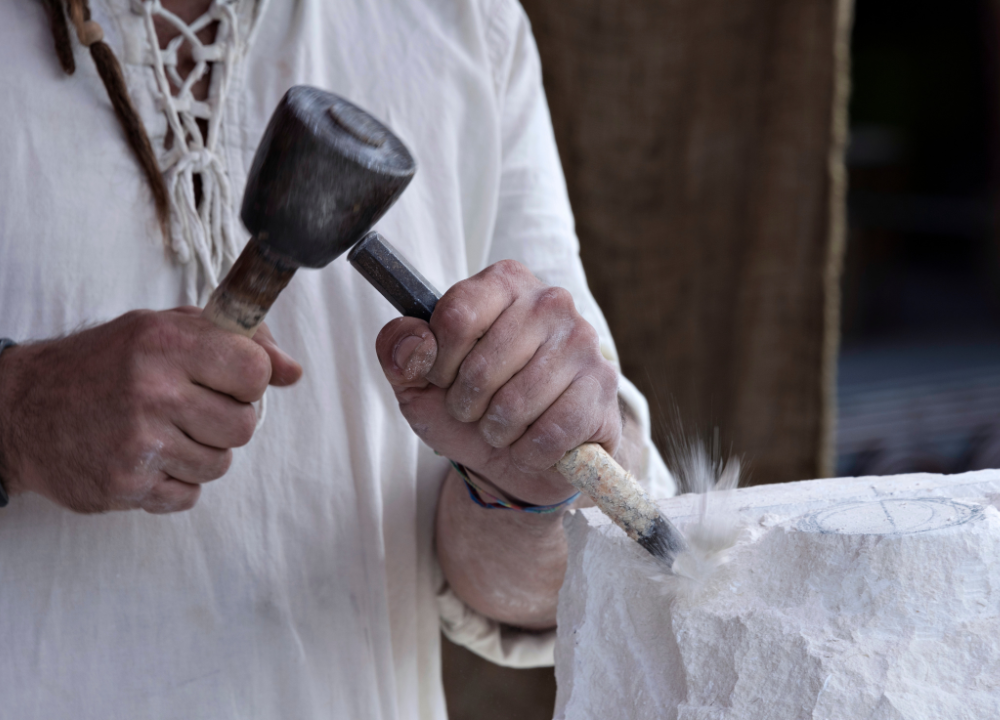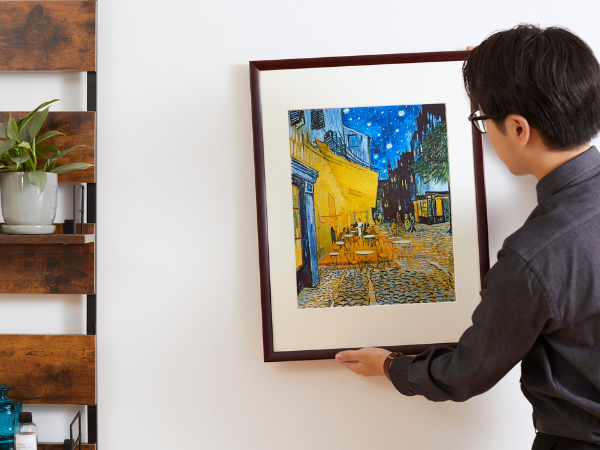Masterpieces in Stone: Profiles of Renowned Sculptors showcases the works of talented sculptors, offering a comprehensive insight into their artistic prowess and achievements. We will delve into the lives and careers of these sculptors, exploring the creative processes behind their remarkable creations and the impact they have made in the art world.
Get ready to be inspired by the stories behind these iconic sculptures and discover the passion and dedication that drives these artists to create breathtaking works of art. Join us as we delve into the fascinating world of sculptors and their masterpieces.
1. Michelangelo
Michelangelo, one of the greatest sculptors of all time, is known for his masterpieces in stone. His works are included in the captivating profiles of renowned sculptors, celebrating their extraordinary talent and artistic achievements.
Early Life And Training
Michelangelo, one of the greatest sculptors of all time, was born on March 6, 1475, in Caprese, Italy. He displayed artistic talent at a young age and was enrolled in the apprenticeship of Ghirlandaio, a prominent painter in Florence. Under Ghirlandaio’s guidance, Michelangelo honed his skills in painting and drawing. But his true passion lied in sculpture, and he dedicated himself to mastering the art form.
David And The Sistine Chapel
Michelangelo’s fame skyrocketed when he completed his masterpiece, the sculpture of David, in 1504. This incredible piece, depicting the biblical hero, stands at an impressive height of 17 feet and exudes a sense of power and grace. Its intricate details and lifelike expression solidified Michelangelo’s status as a visionary sculptor.
Later, Michelangelo received a commission that would seal his legacy as a sculptor and painter. He was tasked with painting the ceiling of the Sistine Chapel, a project that took him four years to complete. The frescoes depicted scenes from the Bible with astonishing realism, showcasing Michelangelo’s unparalleled skill and creativity.
Later Works And Legacy
In the later years of his career, Michelangelo continued to produce awe-inspiring sculptures, including the mesmerizing Pietà and the colossal Moses. His ability to breathe life into marble captured the imagination of the world. Michelangelo’s legacy continues to inspire generations of sculptors. His innovative techniques, meticulous attention to detail, and unparalleled passion for his craft set a standard that still influences artists today. His works remain some of the most revered and sought-after masterpieces in the art world, leaving an indelible mark on the history of sculpture.

2. Auguste Rodin
Auguste Rodin, often referred to as the father of modern sculpture, was a French artist known for his innovative techniques and captivating creations. With a career spanning over six decades, Rodin left an indelible mark on the art world, revolutionizing the way we perceive and appreciate sculpture.
Formative Years And Influences
Rodin’s journey as an artist began in his formative years. At the age of 14, he entered the Petite École, a specialized school for the decorative arts, where he honed his skills in drawing and sculpting. His fascination with the human form and the works of Michelangelo, Donatello, and Antoine-Louis Barye fueled his passion for sculpting and laid the foundation for his later style.
Table: Influences on Auguste Rodin
| Influences | Impact on Rodin |
|---|---|
| Michelangelo | Inspired Rodin’s deep focus on anatomical details and expressive poses |
| Donatello | Introduced Rodin to the concept of realistic portraiture and naturalistic forms |
| Antoine-Louis Barye | Instilled in Rodin a love for animal sculpture and the importance of gesture and movement |
Breakthrough With The Burghers Of Calais
One of Rodin’s most significant breakthroughs came with his masterpiece, The Burghers of Calais. Commissioned by the city of Calais to commemorate a heroic event during the Hundred Years’ War, the sculpture captured the raw emotions and inner turmoil of the six burghers facing their imminent sacrifice. Rodin’s unconventional approach to portraying human suffering and vulnerability in bronze astonished art critics and affirmed his place as a leading sculptor of his time.
The Thinker And Other Iconic Works
Perhaps Rodin’s most recognizable creation, The Thinker, has become an icon in its own right. Originally conceived as part of a larger work titled The Gates of Hell, this powerful bronze statue captivates viewers with its contemplative posture and introspective aura. However, The Thinker is just one of the many iconic works that shaped Rodin’s legacy. From The Kiss, a sensuous portrayal of passionate love, to the emotionally charged The Age of Bronze, Rodin consistently pushed artistic boundaries and redefined the possibilities of sculpture.
3. Gian Lorenzo Bernini
Gian Lorenzo Bernini, one of the greatest sculptors in history, was a key figure in the Baroque movement. Born in Naples in 1598, Bernini possessed an extraordinary talent for sculpting that was evident from a young age. His ability to breathe life into stone was unparalleled, and his works continue to captivate audiences around the world.
The Ecstasy Of Saint Teresa
One of Bernini’s most famous masterpieces is “The Ecstasy of Saint Teresa,” located in the Cornaro Chapel of the Santa Maria della Vittoria church in Rome. This breathtaking sculpture depicts Saint Teresa of Avila experiencing a mystical and divine encounter. Bernini’s attention to detail and the intricate composition of the sculpture convey the intensity and ecstasy of Saint Teresa’s spiritual experience. The marble seems to come alive as the viewer witnesses the passion and devotion captured in stone.

Fountains And Architectural Marvels
Bernini’s creative genius extended beyond sculptures into the realm of fountains and architectural marvels. One of his notable works is the Fontana dei Quattro Fiumi (Fountain of the Four Rivers) in Rome’s Piazza Navona. This masterpiece showcases Bernini’s ability to seamlessly blend sculpture, architecture, and water elements into a harmonious whole. Each figure in the fountain represents a different river, symbolizing the continents known at the time. The grandeur and visual splendor of Bernini’s fountain leave a lasting impression on all who behold it.
Bernini’s talent also shines through in his designs for buildings, such as the magnificent colonnade in St. Peter’s Square at the Vatican. The sweeping curves and intricate details of this architectural wonder complement the grandeur of the surrounding basilica and create a sense of awe-inspiring beauty.
In conclusion, Gian Lorenzo Bernini’s masterpieces continue to inspire awe and admiration centuries after their creation. His ability to infuse emotion and life into stone, as seen in “The Ecstasy of Saint Teresa,” has left an indelible mark on the world of sculpting. Moreover, his expertise in integrating fountains and architectural elements in works like the Fontana dei Quattro Fiumi and St. Peter’s Square showcase his versatility and innovation. Bernini’s contributions to the art world are nothing short of extraordinary.
4. Constantin Brancusi
Constantin Brancusi, a trailblazing sculptor from Romania, left an indelible mark on the art world with his unique approach to sculpting. His work explored the essence of forms, and he is celebrated for his masterpieces, including the iconic Bird in Space and the monumental Endless Column.
Early Life And Influences
Brancusi was born in Hobita, Romania in 1876. Growing up in a peasant family, he showed an early talent for sculpture. Despite humble beginnings, he managed to secure a scholarship to study at the Bucharest School of Fine Arts. Later, he moved to Paris, the epicenter of the art world, where he was exposed to the works of influential artists like Auguste Rodin and Antoine Bourdelle.
Paris had a profound impact on Brancusi’s artistic development, and he soon found himself immersed in the avant-garde art scene of the early 20th century. He was particularly drawn to African and Oceanic art, which challenged the traditional notions of beauty and form. These influences would later shape his distinctive style.
Bird In Space And Endless Column
One of Brancusi’s most famous works is the ethereal Bird in Space. The sculpture captures the essence of movement, with the elongated, streamlined form of a bird ready to take flight. Its smooth, polished surface reflects light, creating an illusion of weightlessness. Bird in Space embodies Brancusi’s belief that the essence of art lies in capturing the spirit and energy of a subject, rather than replicating its physical appearance.
Another notable masterpiece by Brancusi is the Endless Column. Originally created as a funerary monument, this soaring sculpture consists of a series of modular units stacked on top of each other. It represents the eternal cycle of life and death, blending primitive and modern elements. The repetitive verticality of the column symbolizes the continuity and endurance of human existence.
Sculpting The Essence Of Forms
Brancusi’s sculptural philosophy centered around distilling forms to their essential elements. He believed that art should transcend realism and strive for universality. His sculptures often featured simplified, abstract forms, devoid of excessive detail. By reducing forms to their purest essence, Brancusi aimed to evoke deeper emotions and connect with the viewers on a spiritual level.
Throughout his career, Brancusi’s innovation and experimentation with form revolutionized the art of sculpture. His dedication to capturing the essence of forms continues to inspire artists today, making him an enduring figure in the art world.
Frequently Asked Questions
Where Can I Find The Works Of Famous Sculptors?
You can find the works of renowned sculptors in art museums, galleries, and public spaces worldwide. Some notable locations include the Louvre in Paris, the Galleria dell’Accademia in Florence, and the Metropolitan Museum of Art in New York City.
What Are Some Famous Sculptures Of All Time?
Throughout history, famous sculptures include Michelangelo’s David, Auguste Rodin’s The Thinker, and Venus de Milo. These masterpieces are celebrated for their artistry, skillful craftsmanship, and significant cultural and historical importance.
How Do Sculptures Capture Emotions In Stone?
Sculptors use various techniques like form, texture, and composition to bring emotions alive in stone. Through intricate carving and accurate portrayal of human anatomy, sculptors are able to convey a wide range of emotions, from joy and love to sadness and despair.
Conclusion
To truly appreciate the beauty and artistry of sculpting, it is essential to delve into the lives and works of renowned sculptors. From Michelangelo’s magnificent David to Rodin’s captivating Thinker, these masterpieces in stone have stood the test of time.
Each sculptor brings a unique perspective and skill to their creations, leaving a lasting impact on the world of art. Explore the intricate details and powerful emotions captured in their sculptures and unlock the secrets behind their awe-inspiring works. Immerse yourself in the world of sculpting and discover the profound artistic expressions that have shaped our history and continue to inspire generations.




